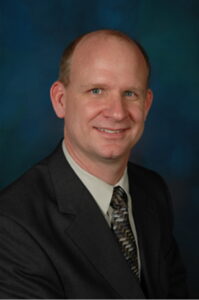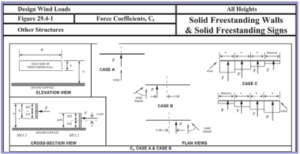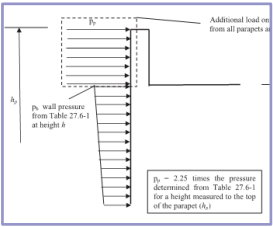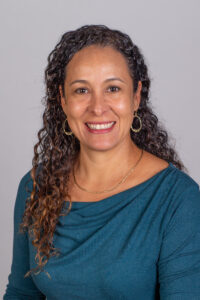26 Aug 2022
2021 SDPWS Highlight: CLT Now Included
Are you aware of the new additions to the 2021 Special Design Provisions for Wind and Seismic (SDPWS)? Several changes have been incorporated in the 2021 edition, which is the first revision since 2015 for this IBC-referenced document. The provisions were developed by AWC’s Wood Design Standards Committee, and new sections have been added to Chapter 4 to include more guidance when using cross-laminated timber (CLT).
In the July 2022 SEU session, Lori Koch, PE, from American Wood Council, presented Special Design Provisions for Wind and Seismic (SDPWS) 2021 Updates. Lori identified the major changes between the 2021 SDPWS and previous editions. She highlighted the new format for the shear wall and diaphragm capacity tables and described the new table for out-of-plane wind resistance for OSB and plywood wall and roof sheathing. Also, she introduced the new shear wall and diaphragm provisions for cross-laminated timber (CLT).
Lori noted that Chapter 4 of SDPWS now contains sections 4.5 Cross-Laminated Timber (CLT) Diaphragms and 4.6 Cross-Laminated (CLT) Shear Walls. Section 4.5 is a one-page standard whose requirements are largely an engineered approach which references the National Design Specification (NDS) for the design of CLT diaphragms.
Section 4.6 references the newly added Appendix B for design provisions applicable for wind and seismic. Appendix B includes the mandatory requirements for CLT shear walls and defines two systems: CLT shear wall and CLT shear wall with shear resistance provided by high aspect ratio panels only. The requirements mandate platform construction where CLT floor panels bear on CLT walls below. There are limits to the aspect ratio of the panels and which connectors may be used, and uplift due to overturning must be resisted by hold-downs. There is an exception to the requirements in Appendix B for buildings in low seismic hazard areas which do not exceed 65 feet in height.
Lori noted that extensive testing to CLT shear walls was conducted in accordance with FEMA P-695 in order to identify seismic performance factors of CLT shear walls as a new seismic force resisting system (SFRS). The methodology used is consistent with the primary “life safety” performance objective of seismic regulations in model building codes. To view the results of this FEMA P-695 report, click here.
With the addition of the CLT sections to the 2021 SDPWS, engineers now have a codified standard for use in their wood structures. To download the new updates to the 2021 SDPWS or to purchase your own copy, click visit the AWC website.
26 Aug 2022
“SEU Speaker Inspires” Organization of the Month: Structural Engineers Association of Utah Scholarship Fund
In June 2022, SEU welcomed Barry Arnold, PE, SE, from ARW Engineers, to present Base Plates, Embeds, and Disasters, Oh My! Barry has designated Structural Engineers Association of Utah Scholarship Fund (Structural Engineers Association of Utah – Scholarships (seau.org)) for our SEU Speaker Inspires donation for the month.
Barry shared, “As a student struggling to pay for tuition and books, attending classes, completing homework, maintaining a good family life, and working full-time, I remember how grateful I was to receive a scholarship. Receiving a scholarship reduced my anxiety and the pressure I felt by easing my financial burdens. I hope whoever receives this scholarship will benefit from the financial assistance as I did when I was a student.”
Thank you, Barry, for helping structural engineers with your SEU session, and for your designation of Structural Engineers Association of Utah Scholarship Fund as our SEU Speaker Inspires Organization of the Month!
SEU began the SEU Speaker Inspires program in 2015 as a way to “pay it forward”, enabling our speakers to designate a charity/organization of their choice for SEU to make a donation to help improve our world.
18 Jul 2022
Wind Loads on Rooftop Screenwalls
Which ASCE provision do you typically use when designing a rooftop screenwall for wind loads? Several options have been used by structural engineers in the past, but the best option has been debatable since the code has not explicitly spoken on the subject. New guidance in ASCE 7-16 helps clarify this frequently asked question.
In the May 2022 SEU Session, Emily Guglielmo, SE, PE, from Martin/Martin Inc., presented Wind Loads: Updated Frequently Asked Questions. Emily explained how to deal with commonly encountered wind load situations that are not fully addressed in the code. She also identified the latest code updates and examined some complicated wind load provisions and how they relate to real world examples.
One of the most frequently asked questions, in regard to wind load provisions, is what wind load should engineers use for a roof top screen wall or equipment? Emily noted that while there are several commonly used provisions for these calculations, there is an approach that may be considered ‘more right’ than others. Typically, engineers have used one of the following three different options for determining the wind loads on rooftop screen walls:
A. Rooftop Structures and Equipment
B. Solid Freestanding Signs
C. Parapet Pressures
While Emily noted that none of these approaches are necessarily incorrect, the code now offers some guidance in the commentary:
New to the commentary in ASCE7-16, C29.4.1 states that “Mechanical equipment screens… located away from the edge of the building roof such that they are not considered parapets…” should use the wind load determined with Section 29.4.1. This statement implies that if the screen is located near the edge of the roof, that perhaps a parapet pressure might be more appropriate. Emily noted that it would be reasonable to conclude that if the screen wall falls within the typical rooftop wind zone, then Sections 29.4.1 should be applied and when the screen falls within an edge or corner zone, a parapet pressure could be more appropriate.
This new addition to the commentary with the 2016 revision helps provide more clarity to this frequently asked question, and engineers now have more guidance for common rooftop screens and equipment.
In April 2022, SEU welcomed Carine Magalhaes Leys, from Odeh Engineers, to present 2022 Post-Tensioning Design: Finite Element Method-Based Solutions. Carine has designated GRAACC Support Group for Adolescents and Children with Cancer in Brazil (https://www.globalgiving.org/projects/better-chances-of-cure-for-childhood-cancer-in-br/) for our SEU Speaker Inspires donation for the month.
Carine wished to support children in Brazil where there is an estimated 16,000 new cases of cancer in every 100.000 children and adolescents. Cancer is the first leading cause of death by disease in the population up to 19 years old. The GRAACC manages and maintains a hospital that offers diagnostic, treatment and after treatment for children and adolescents with cancer in Brazil.
Thank you, Carine, for helping structural engineers with your SEU session, and for your designation of GRAACC Support Group for Adolescents and Children with Cancer as our SEU Speaker Inspires Organization of the Month!
SEU began the SEU Speaker Inspires program in 2015 as a way to “pay it forward”, enabling our speakers to designate a charity/organization of their choice for SEU to make a donation to help improve our world.
30 Jun 2022
Resources for Improving Leadership Skills
Natural born leaders are a rare breed, but many skills needed to empower and motivate teams can be learned and improved. However, it takes great intentionality to make meaningful change. Changing patterns and behaviors can be a challenge, but learning the art of building successful working relationships will pay dividends over the course of a career. Check out these helpful articles and resources which aim to identify excellent leadership qualities and tips to hone your skills:
5 Traits That Will Instantly Point to Someone With Bad Leadership Skills | Inc.com
Why The Distinction Between Leader And Manager Matters (forbes.com)
How Can You Be Sure Someone Has What It Takes to Lead People? Look for 4 Rare Habits | Inc.com
9 Skills to Manage Your Team | Blog.SHRM.org
The Leadership Skills To Be Learned From Parenting – Young Upstarts






